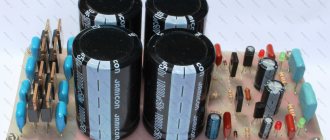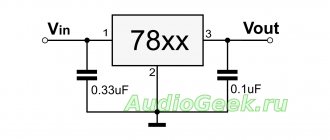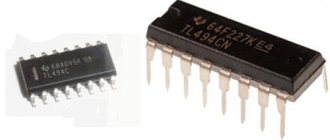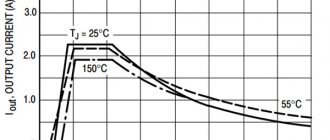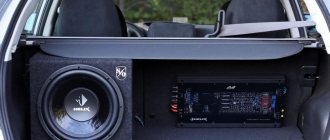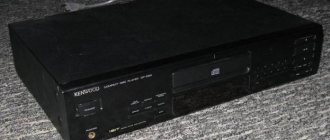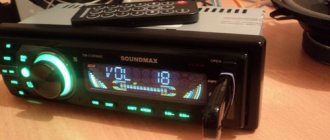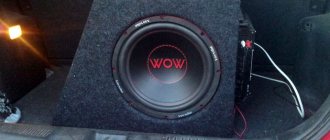It is better to listen to high-quality music recordings in good sound. Sound in films also plays an important role. For most lovers of high-quality audio sound, nowadays you can find devices in the retail network that allow you to reproduce sound in maximum sound quality.
Such pleasure does not come cheap. Therefore, owners of high-quality devices take care of their devices. If you need to preserve high-quality audio equipment for many years so that it does not break due to voltage surges and surges, then you need to buy a voltage stabilizer for audio equipment, which can increase the service life and reliability of such devices.
You can separately purchase a stabilizer for the amplifier, since they are the first to fail. Most often, one power surge in the network is enough to cause new audio equipment to fail. If you send it for repairs, you will spend a lot of money and also time. To avoid these problems, you need to take care of your audio system in advance and buy a special stabilizer for audio equipment.
With such a device you will gain confidence in the reliable operation of your speakers and amplifier. Its installation will cost you much less than the upcoming repair or purchase of new audio equipment. The sound quality will also improve. Electricity costs will be reduced by adjusting the device to the optimal voltage level.
The need to install a stabilizer for audio equipment
In domestic electrical networks, malfunctions are one of the most popular problems. Therefore, many types of household devices in the device have protection against voltage drops below 200 volts and increases above 240 V. However, there are short-term surges in networks up to 300 volts, which will certainly lead to malfunctions of modern audio equipment, televisions and other expensive devices. Such cases happen quite often and cause trouble for owners of audio equipment.
To prevent such unpredictable problems associated with the purchase of expensive equipment, you need to purchase a voltage stabilizer, the operation of which is optimized for the operation of household devices and audio equipment. In this case, it is better to give preference to triac models made on the basis of thyristors.
They can maintain 220 V voltage at the proper level and of the required quality. Such devices do not create noise and have a high accuracy of output voltage.
The main difference between thyristor stabilizers is that they have an electronic switch circuit based on triacs. Using this type of device, you can achieve ideal voltage quality of 220 volts with an accuracy of 3%.
How does poor quality power supply affect audio equipment?
Many music lovers attach great importance to sound quality. Therefore, they install audio systems in an apartment or country house, which often consist of a large number of elements: playback devices, subwoofers, speakers of various types. High-quality audio equipment is also necessary for those who want to watch movies comfortably at home, achieving a sound that is not inferior to a cinema. Modern audio and video equipment can cost quite a large sum, so it is not surprising that its owners are concerned about its proper use.
One of the negative factors that modern audio equipment really needs protection from is voltage surges. Sudden changes in current parameters can not only degrade sound quality, but also cause breakdowns that will require expensive repairs.
Attention!
Repair of audio equipment that has failed due to voltage surges is not covered by warranty, since it is the user’s responsibility to ensure proper power supply to the device. Therefore, you have to troubleshoot problems at your own expense.
Sometimes owners of damaged equipment try to subsequently recover repair costs from the electricity supplier who did not provide high-quality power supply. However, in practice, it is extremely difficult to achieve such compensation, and the cost of repairs ultimately falls on the end consumer.
It is better to prevent such breakdowns from occurring in advance. To do this, it is enough to connect the audio equipment through a voltage stabilizer, which will protect it from sudden network fluctuations.
Review of stabilizer models for audio equipment
There are many different stabilizers for audio equipment, from various imported and domestic manufacturers. Let's look at some popular stabilizer models.
Portable stabilizer VOLTER 2000 for audio equipment.
Technical specifications:
| № | Property name | Magnitude |
| 1 | Input voltage interval, volts | 150 — 245 |
| 2 | Output power, kilowatt, not higher: a) maximum b) minimum | 2,2 1,5 |
| 3 | Rated output voltage, V | 220 |
| 4 | Voltage deviation from the nominal value at the output, % not higher | +2 / -3 |
| 5 | Protective operation when the input voltage increases above, volts | 245 |
| 6 | Circuit breaker current, ampere | 10 |
| 7 | Overall dimensions, mm | 124 x 435 x 360 |
| 8 | Number of auto-regulation stages | 16 |
| 9 | Adjustment level, volts | 5 |
| 10 | Weight, kg, not more than | 15,5 |
The VOLTER 2000 stabilizer is used to connect audio equipment to an equalized voltage supply. Its size and quiet operation make it possible to place the device in a TV stand or audio rack.
In addition to the stabilization option, the device implements a set of load protection measures that can be independently adjusted. It is possible to change the smooth shutdown delay, input voltage range, and output voltage value in accordance with the characteristics of your audio equipment.
When switched off, the device settings will be saved. However, it is possible to reset to factory settings. The device is controlled using the remote control that is included with the device, as well as buttons located on the stabilizer body. There is an option for programming operating parameters.
The stabilizer for audio equipment is capable of protecting electrical equipment from abnormal changes in the power supply network, has a high-frequency interference filter, microprocessor protection of electronic modules with some functions of intellectual properties.
Network air conditioner – stabilizer Muz Detal 2500
The power supply filter is an important component of high-quality audio equipment. It acts as an intermediary in the transfer of electricity from the network to the audio system and removes interference that affects the quality of audio sound. Auxiliary protection for electrical equipment extends the life of all audio equipment as a whole by many years.
This Muz Detal 2500 model serves to stabilize and filter network voltage, as well as protect audio systems from excessive voltage.
Protecting your audio equipment with a voltage stabilizer
Audio equipment intended for use in Russia and European countries is designed to be powered from a network with a voltage of 220/230 V. Information about this is indicated in the technical characteristics of the devices. It is at this voltage that the manufacturer guarantees normal operation of the equipment.
According to GOST, the voltage in household electrical networks must correspond to this indicator, but in practice this is not always achieved. The reason may be wear and tear of wiring or power supply networks, a sharp increase in electricity consumption at certain times of the day, or adverse weather conditions.
To determine how much you need a stabilizer for audio equipment, check whether the parameters of your network meet the regulatory standards. It is advisable to take measurements several times a day for several days - this will allow you to obtain the most complete assessment of voltage changes. You can often notice differences with the naked eye: if the light dims from time to time, and electrical appliances (for example, a refrigerator) begin to work intermittently or emit a strong hum, then it is better to connect expensive equipment exclusively through a stabilizer.
However, even if such phenomena are not observed, it is better to be safe. Power failures can occur completely unexpectedly, and even one sudden change will be enough to cause a breakdown. Using a voltage stabilizer will minimize the risk of such problems and ensure the normal functioning of audio equipment, regardless of the state of the electrical network in your home.
Design
The network stabilizer consists of the following parts:
- The network air conditioner control device does not contain pulse units.
- Stabilizing device with an autonomous high voltage load protection unit.
- Smoothing stabilizer with protection against high network pulses and power surges.
- Complete isolation from the external network.
- Network constant filter.
- The high-frequency network filter protects against power surges.
- Digital voltmeter.
- LED indicator of the operating status of the transformer coils.
Voltage stabilizer for audio system
The desire to make the voltage in the network stable is reasonable if there are reasons that contribute to this. The man/woman said it and did it. Fortunately, in stores there are quite a lot of voltage stabilizers to choose from and the price is excellent - what’s the problem with going in and buying one? Everything in our lives would be very simple if it weren’t so difficult. In my house the voltage is quite stable, but the power engineers are so generous with the voltage that if at the beginning the sockets had a stable 235 volts, now they have completely lost their fear and the sockets already have 240 and 245, well, that’s something completely different.
Of course, it is clear that there is a young microdistrict under construction around it, and when it is built up, the voltage from connected consumers will drop to acceptable levels, but now what to do?
Perhaps this problem personally would not have bothered me if it had not been superimposed on another, in the form of a step-down transformer for Japanese audio equipment. I use a Russian product - Shtil step-down transformer, 1.6 kW, 100 volts.
There is nothing inside the case except a heavy transformer and a fuse. The idea is that you plug your 100-volt Japanese amplifier into the Stihl and, voila, you get 100 volts and enjoy life.
But this is where the nuance lies. The step-down transformer is designed to transform 100 volts of voltage from 220 volts. And... And... And??? If there were 220 volts in the network, then Calm would output 100. But in my network it’s 235-240 and Calm outputs 110 at best, respectively. That is. 10% more than face value. Yes, this is within the normal range, but you yourself understand that this is not good in the end. And when is the voltage 245? So I thought about a stabilizer. Okay, main friend, I’ll connect the stabilizer first, it will make the voltage from the line 220 volts, and my Calm will convert everything into an ideal 100 volts. It seems that everything in this scheme looks convincing. It is for this reason that I most often send theorists on the forum to cultivate beds on the Moon.
I looked at photographs and even, oh my god, a video where the happy owners of Resant and other stabilizers turned on their stabilizers and their display always showed a perfect 220 volts. And I relaxed blissfully until I realized that these beautiful numbers on the display were props, a circus with horses and clowns from Resanta and associates. The fact is that if you look at the range of voltage stabilizers offered, they differ in type.
The guy with the disgusting face
Relay, electromechanical (servo-drive), inverter (stepless, transformerless, IGBT, PWM), ferroresonant, electronic... You feel how the simplicity of the question drains into your pants. I will simplify the understanding of the issue, I will subject it to decimation in a mathematical sense, and not, as was the case in Rome, with every tenth person.
If you are not ready to pay more than 10,000 rubles for a stabilizer, and having seen enough of the price tags of stabilizers of 1000-3000 rubles, you are already mentally prepared for an easy decision, probably, then the choice lies mainly in relay and electromechanical stabilizers.
The general principle of their operation is something like this: there is a transformer of a certain power equivalent to the load you are going to connect. I would advise choosing with a reserve.
For example, I have a Parasound A23 power amplifier, it has a 900-watt transformer installed, respectively, the cost stabilizer is 1500-2000 watts, fortunately the price difference is small.
This is not necessary, but only a measure of forethought and paranoia, in case the manufacturer cheated, underreported, undermeasured, or did not like it. For example, I choose a stabilizer with a power of 1500 watts, inside it there will be a 1500 watt transformer, with outputs for different voltages in steps of, for example, 20-30 volts. And now the stabilizer voltmeter measures the input voltage and, depending on the values, the microcircuit switches using a relay (clicks) to one or another winding in increments of 20-30 volts.
If the stabilizer is electromechanical, then instead of a relay, there is a motor that moves the brush along the windings with a characteristic hum, but the meaning is still the same.
Well, imagine an ordinary LATR. You look at the input voltage readings and turn the knob to the desired value.
A stabilizer is the same LATR, only the operations of setting the required current value are to some extent automated and do not require your participation, theoretically. What happens in practice? You want exactly 220 volts to be supplied to your devices, you turn on, for example, Resanta and... you see that the input voltage is 237-239 volts (a lot!!!), and the stabilizer shows on the display that the output is now an ideal 220.
I will take the characteristics of the stabilizer: Type of stabilization electronic Type of network single-phase Input voltage from 140 to 260 V Operating frequency of the network 50/60 Hz Output voltage 220 V ± 8% Rated power 2 kW Efficiency factor (efficiency) 97% , with a load of at least 80% High voltage protection 260V ± 5V Delay time 5-7 ms No sine wave distortion
Idyll. Just don’t try to measure with a voltmeter what voltage is actually coming from Resanta. But if you didn’t listen, you will suddenly see that instead of the 220 volts declared on the board, the same 237 volts are being output from the stabilizer. What a trick! And look what's the matter. We read the accuracy of the stabilizer - +-8% . I won’t add 8+8, just 8. That is. if the network is 220+8% (its error, voltage lag) = 237 volts, then the device considers that everything is ideal and there is no need to switch to another winding. And you’re just left in a precipitate, and is such a stabilizer even needed on purquois if it doesn’t do anything?
I was especially frozen by the opinion of one of the Resanta representatives, where he explained that they specifically made the display in the stabilizer always show 220 volts, to reassure the buyer, because “it’s still within normal limits.” Oops, the horses are dancing.
Since I got to the bottom of Resanta (sorry guys, but we need to improve the quality, and not engage in demagoguery - 220 is 220, and 237 is not 220), then I was also completely frozen out, judging by the many videos on YouTube about the repair of these devices, the build quality of this most primitive device sucks - the quality of soldering is disgusting - the wires simply fall off. After such viewings, I was afraid to buy Resanta, if only for this reason. Maybe there were some sloppy moments in your production once, but now you’re already wow, anything can happen. But price plays everything in our reality. After my experiments with cheap stabilizers, I was unexpectedly satisfied with the 2 kW Powerman AVS-2000D.
I’m not ready to discuss its quality, it may also be poorly soldered, but it’s much worse than in Resant, after all, this is China, they already know how to solder there, while local manufacturers have obviously forgotten how to solder. The low price of a product does not mean that there should be a low production culture. It is only a competitive tool in the fight for the buyer. Personally, I have confidence in Chinese manufacturers, especially Powerman (in fact, the Typeit company produces products under the brands Powerman, Inwin, Conner, Neva, Chairman) there.
If you are looking for an affordable stabilizer, then look for options with a smaller error - 2-4%, but they will definitely be more expensive, twice or 10 times. I opted for a Chinese two-kilowatt Powerman, it cost me 2,700 rubles. It also has a large error of 8%, but the switching modes are probably made more favorably and the digital display does not lie to the output voltage. By the way, the dial indicator is not convenient; you will not know exactly what the current voltage is, unlike a digital one, where everything is immediately clear.
My Powerman stabilizer, at 235-237 volts in the network, switches to a winding with a voltage of 216-218 volts, which I consider an excellent result. And the Stihl step-down transformer connected to the stabilizer finally produces the ideal 99 volts for Japanese technology. Why Powerman turned out to be a solution, but Resanta was not, I think it has to do with the positioning of the product in principle. Powerman “makes” both power supplies for computers and “oopsies”, i.e. products for fairly high-tech devices, and Resanta’s main customers are owners of cottages and garages, where the voltage drops significantly, people connect various power tools, boilers, etc. through them, i.e. more "rough" technique. This is probably why Powerman is trying to produce products that are suitable for high-precision electronic equipment, and not just boilers. Just be aware. The store strongly recommended Resanta to me, but if its display is lying, then why do I need such a stabilizer in principle? Perhaps your network has a different voltage and Resanta will turn on a winding that suits your needs, but for example Powerman will not, so it’s better to check how the device works in your network. In my network, Powerman turned out to be an ideal and cheap solution that gave the required 100 volts on Stihl for the Japanese path.
What is a stabilizer and is it necessary for audio equipment?
A voltage stabilizer is an electrical device that is integrated into a household or industrial electrical network to obtain specified parameters at the output voltage.
Information. In 2015, the Russian Federation established a new standard for the quality of electrical networks that corresponds to European parameters. According to the innovation, the optimal voltage in a household electrical network is 230 volts. For industrial networks, this parameter is 400 V. The frequency of the electric current is -50 Hz. The current standard allows deviation from the nominal parameters within no more than 10%. Thus, the range of permissible voltage fluctuations in the electrical network is from 207 to 253 volts.
Meanwhile, along with the new standard, a voltage supply of 220 V is allowed according to the old GOST 29322-2014.
In fact, worn-out electrical networks and old power equipment, which are typical for many regions of our country, lead to significant voltage sags, which poses a serious threat to the serviceability of electrical appliances and leads to a reduction in their service life. Just watch this video to see that even a minor problem with the contacts in the distribution panel can contribute to significant voltage fluctuations in the home network.
According to current legislation, liability in connection with the failure of electrical equipment due to the supply of low-quality voltage falls on the electricity supply company. However, obtaining compensation for damaged property is quite difficult. To do this, it is necessary to provide actual evidence of the supply of voltage that does not meet the standard parameters. As a rule, the consideration of such claims in court drags on for many months, and sometimes even years. Naturally, not every victim is ready for lengthy litigation, as a result of which expensive electrical equipment has to be repaired at their own expense without receiving any compensation.
To avoid such a scenario, many owners of expensive electrical equipment protect their property with stabilizers that ensure high-quality power supply.
When purchasing a stabilizer, you should pay attention to the fact that its power is 3-5 times greater than the total power of the load it feeds. Thus, a stabilizer designed to power an amplifier with a power of 150 W must provide a power of 450 W.
Some users of audio and video equipment use surge protectors to ensure normal operation of the equipment. It should be noted that surge protectors do not protect devices from voltage fluctuations; they can only smooth out impulse noise present in the network to a certain extent. However, the stabilizer copes with this task quite successfully. Thus, using a surge protector is advisable only in cases where the home electrical network receives a voltage that corresponds to the established parameters.
